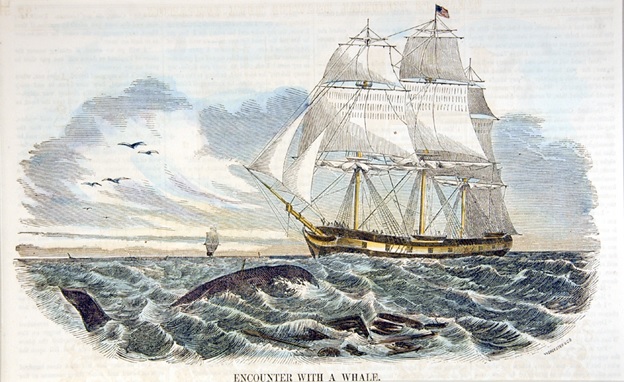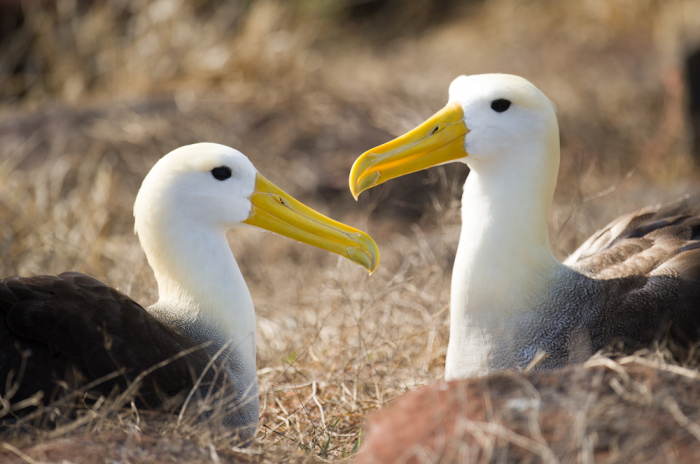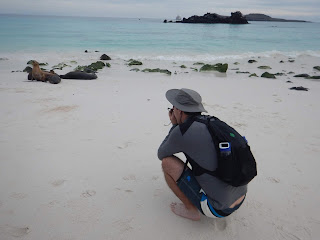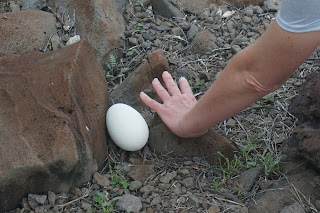Monday,
February 4, 2019
Española
is the southernmost island and the oldest island. It is 60 sq
km. The English name for Española
is Hood, named for an English admiral. It has the highest rate of
endemic species of the Galapagos Islands, probably because it is one
of the most isolated of the islands.


imagecredit:https://www.vacationstogo.com/cruise_port/Espanola__Galapagos_Islands__Ecuador.cfm
Animals
on this island include mockingbirds, blue-footed and Nazca boobies,
Darwin finches, red and green marine iguanas,
Galapagos doves and hawks, and sea lions.
In
1820, the crew of the Essex (which inspired Herman Melville's book
Moby Dick) landed on Española.
They took 300 giant tortoises from Española
as food, believing that tortoises could live a year without food or
water. In reality, the tortoises slowly starved.


imagecredit:https://www.awesomestories.com/asset/view/In-the-Heart-of-the-Sea-The-Tragedy-of-the-Whaleship-Essex
The
Española giant tortoise species was almost extinct in the 1960s,
with only 14 of them left. The 2 males and 12 females were taken to
the captive breeding center on Santa Cruz. They were the first
Galapagos tortoises to ever be bred in captivity. Researchers also
searched the world over for any other surviving Española tortoises.
It seems that sailors had taken 13 of them in the early 1900s and
they found their way to the San Diego Zoo. Only one was still alive.
He was named Diego and brought to the breeding center in 1977. He
has been quite prolific, producing hundreds of offspring so far. In
fact, Diego is said to be responsible for about 45% of the
hatchlings. The Restoration Program has successfully released over
2000 Española tortoises back onto the island.

imagecredit:https://www.galapagos.org/newsroom/success-for-espanola-tortoises/
To get to an island, we take a zodiac from the large ship. Sometimes it is a wet landing where we get our feet wet, or a dry landing where we disembark on rocks or maybe even a pier. We were introduced to the
Galapagos Handshake, where the passenger has to hold the guide's arm
when getting in and out of a zodiac.
In
the morning we were at the northeast shore at Gardner Bay (7 am to 2
pm). It has a long white sand beach (2 km long) and clear blue waters. The beach is white coral
sand flecked with bits of colour, very pretty. The beach was full of sea lions laying around. It may also be the
only place in the Galapagos where you can roam freely without your
naturalist guide.
The
Hood Mockingbirds have been known to be quite bold with visitors,
landing on your head or shoulders, trying to untie your shoelaces,
or pecking at your water bottles to try to get water.
We saw manta rays in the water:
These are the tracks of a nesting sea turtle:
The sea lions really seemed to like Frankie:
We spent an hour snorkeling:
A whale skeleton on the beach:
In
the afternoon, the ship went around Española
Island to Punta Suárez (Suárez
Point) (3 pm to 7 pm). We had a choice of long difficult walk or short walk. Punta Suárez (Suárez Point) has the longest trail of any of the trails we would take on this trip, about 4 km. It included low scrub brush, a beach with sea lions, and lots of clambering over lava rocks. It was soooo hot and humid, we were glad when it got overcast!
There were lazy sea lions at the rocky landing site, with lots of babies that were adorable.
The Sally Lightfoot Crabs were striking against the rocks.
There were lazy sea lions at the rocky landing site, with lots of babies that were adorable.
The Sally Lightfoot Crabs were striking against the rocks.
We had to watch our step to make sure we didn't step on any lava lizards.
This is a marine iguana. Española is the only place where the marine iguanas remain brightly coloured throughout the year. The locals call them Christmas lizards.
Suárez
Point is the only place in the world where albatross
make their nests. Starting in April, 25,000 – 30,000 albatrosses will come
here to mate. We didn't see any albatross, but they have started to arrive because the naturalist Diego saw their guava and we saw an abandoned egg.


imagecredit:https://www.entouriste.com/galapagos-wildlife/birds-nesting-in-the-galapagos/
We watched a pair of mating Nazca Boobies. He kept offering her twigs and stones, and she was having none of it:
This was a mother with her baby:
The trail leads to a cliff on the southern part of the island. Waves crash into it and this causes a blowhole with 30 m high sprays.
This was a mother with her baby:
The trail leads to a cliff on the southern part of the island. Waves crash into it and this causes a blowhole with 30 m high sprays.





















No comments:
Post a Comment